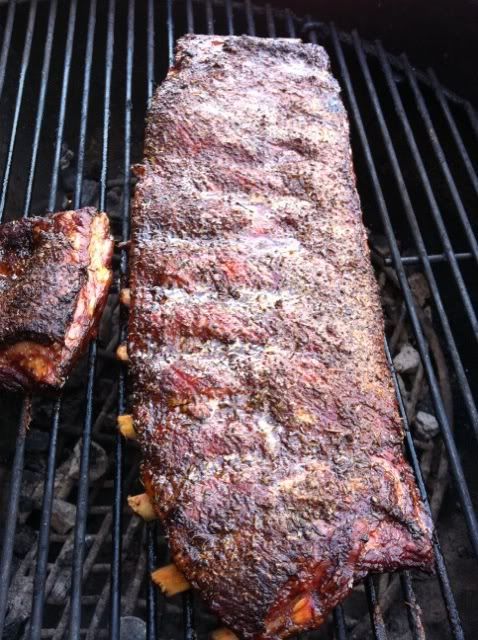Mark Evenson
TVWBB Wizard
Read an interesting post, actually one statement, from K Kruger just now,
Posted September 28, 2010 08:25 AM
...Commercial pork ribs do not require low/slow temps, despite what one repeatedly reads.
Kevin
So this statement started me thinking. Is it true that many traditional cooking temps in BBQ originated many years ago when the meat that was available to the BBQer was very different than it is today? I wasn't around BBQ in the "old day" but from what I have read ie. in Texas, brisket, was a cut of meat that originally was thrown away, ground up, given to the dog, or later, given to an Easternern to cook as a joke. Chicken came out of the yard, pork was either on the hoof or came from a slaughter house or butcher where very little if any enhancements were done. Aging times were different and in general the meat you BBQed was different, hense slower, cooking methods were used. Todays choices in meat to the city folk, me, are pretty limited to commercially rased products. Ya there are more individual producers of meat but the cost is generally more than most of us want to pay. And so cooking methods and cooking times with higher heat ranges are being employed because it works, on the product we have to cook.
Don't know if this is of general interest, but I would like to see a sampling, a pole, of the cooking temps used by the members here for various meats and the results of those cooks. I just wonder if the times they are a changin?
Mark
Posted September 28, 2010 08:25 AM
...Commercial pork ribs do not require low/slow temps, despite what one repeatedly reads.
Kevin
So this statement started me thinking. Is it true that many traditional cooking temps in BBQ originated many years ago when the meat that was available to the BBQer was very different than it is today? I wasn't around BBQ in the "old day" but from what I have read ie. in Texas, brisket, was a cut of meat that originally was thrown away, ground up, given to the dog, or later, given to an Easternern to cook as a joke. Chicken came out of the yard, pork was either on the hoof or came from a slaughter house or butcher where very little if any enhancements were done. Aging times were different and in general the meat you BBQed was different, hense slower, cooking methods were used. Todays choices in meat to the city folk, me, are pretty limited to commercially rased products. Ya there are more individual producers of meat but the cost is generally more than most of us want to pay. And so cooking methods and cooking times with higher heat ranges are being employed because it works, on the product we have to cook.
Don't know if this is of general interest, but I would like to see a sampling, a pole, of the cooking temps used by the members here for various meats and the results of those cooks. I just wonder if the times they are a changin?
Mark

